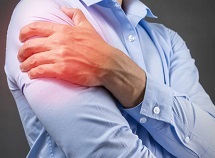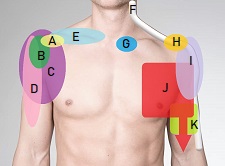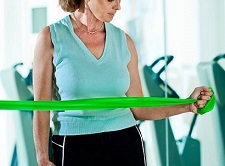- Home
- Diagnosis Guide
- Trapezius Pain
Trapezius Pain
Written By: Chloe Wilson BSc (Hons) Physiotherapy
Reviewed By: SPE Medical Review Board
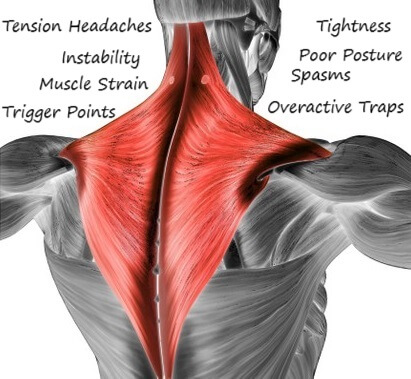
Trapezius pain is a common problem linked with neck, shoulder and upper back tension, tightness and stiffness.
The trapezius muscle is a large, broad, flat muscle that covers much of the upper back.
Trapezius plays a vital role in posture, shoulder blade movement and control as well as neck and shoulder movements.
Poor posture is a common cause of trapezius muscle pain. People who spend long periods hunched over their computer or smart phone are prone to developing chronically tight trapezius muscles which can lead to neck, shoulder and upper back pain.
We are also very prone to storing tension and stress in the upper traps which leads to tightness, muscle strain, trapezius pain and a lumps behind the shoulder.
But there are lots of effective options for trapezius muscle pain treatment. In this article on trapezius pain we will cover:
- Trapezius Muscle Anatomy: where it is, how it works and the different parts of the muscle
- Function Of Trapezius: the actions and functions of trapezius
- Common Causes Of Trapezius Pain: including trapezius trigger points and muscle strain
- Common Symptoms: associated with trapezius muscle pain
- Trapezius Muscle Pain Treatments: best treatment options for trapezius pain including the best trapezius exercises,
- Posture & Trapezius Pain: Posture advice and how to set up your desk correctly to avoid neck, back and trapezius pain
Trapezius Muscle Anatomy
The trapezius muscle is a huge, triangular shaped muscle that covers a large portion of the neck, upper and middle back. When viewed together, the two trapezius muscles look trapezoid-shaped, hence the name! Trapezius is superficial, just underneath the skin, so it is easy to feel.
The trapezius muscle originates from the base of the skull, down the neck through the ligamentum nuchae and from the spinous processes of the thoracic spine. The muscle extends out the whole width of the shoulder attaching to the clavicle, acromion and spine of scapula - a ridge on the back of the shoulder blade.
There are three distinct sections of the trapezius muscle:
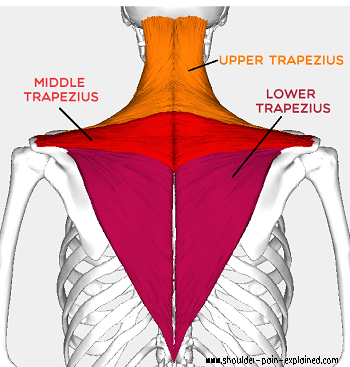
- Upper Trapezius: superior fibres run down from the skull/ neck to the outer third of the collar bone
- Middle Traps: middle fibres run horizontally from the bottom cervical and upper three thoracic vertebrae to the acromion and superior crest of the scapular spine (lateral end)
- Lower Trapezius: the lower fibres run upwards from the T4-T12 vertebrae to the medial end of the spine of scapula
Function Of Trapezius Muscle
The primary function of the trapezius muscle is to stabilise and move the scapula and it plays a vital role in posture, holding the spine upright and supporting the weight of the head and arm.
Other important functions of the trapezius muscle include:
- Neck Movements: tilting and turning the head
- Shoulder Movements: elevates (shrugs) and depresses (drops) the shoulders, twists the upper arm inwards, assists with throwing action
- Shoulder Blade Movements: rotates and retracts (draws back) the scapula
- Scapula Stability: trapezius stabilises the scapula against the rib cage and controls scapulohumeral rhythm
What Causes Trapezius Muscle Pain?
Trapezius muscle pain may be caused by:
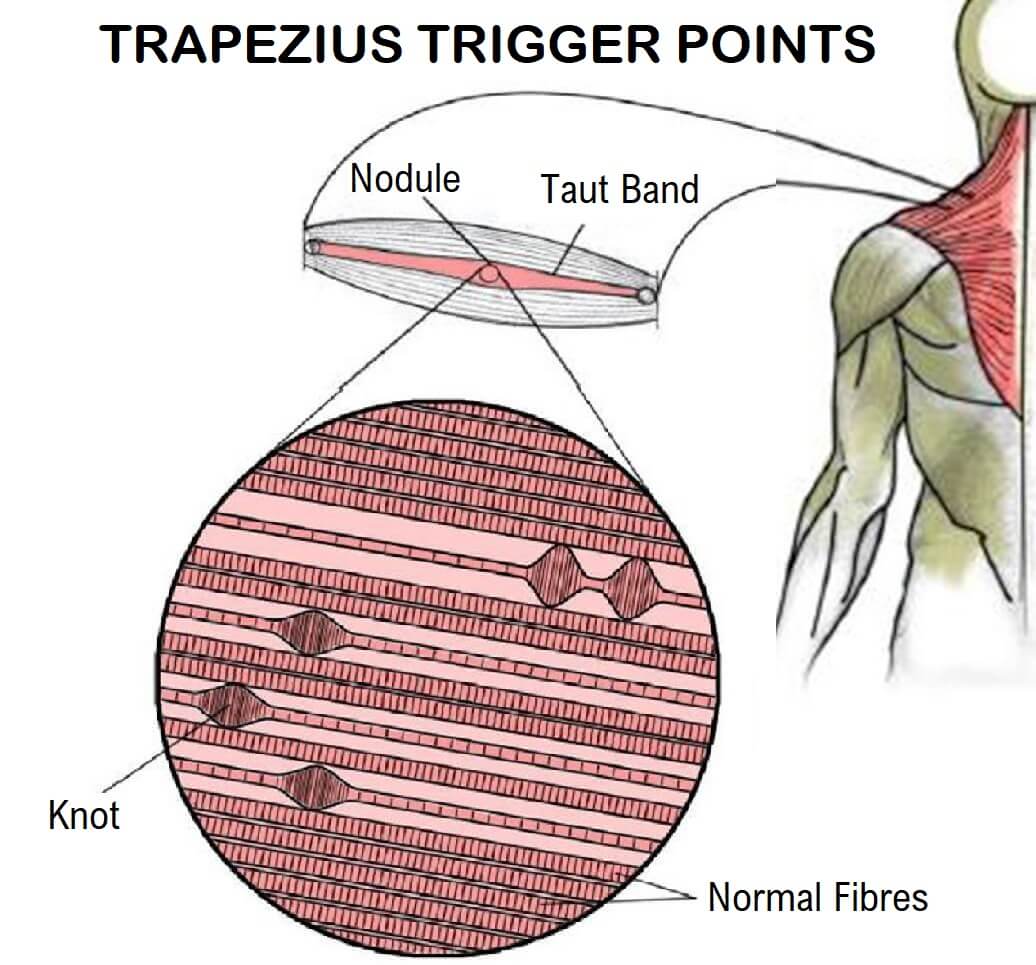
- Trapezius Trigger Points: Small, tight, hypersensitive nodules of fascia commonly known as trapezius muscle knots. Upper trapezius trigger points are the most common location of knots in the body and cause lumps in the back of the shoulder
- Chronically Tight Trapezius: usually from prolonged poor posture e.g. sitting slouched at work desk, are a common cause of trapezius muscle pain
- Overactive Traps: Stress and anxiety often cause us to hold tension in our upper traps which lifts the shoulders slightly – you often don’t notice it until you relax and feel your shoulders drop down
- Trapezius Muscle Spasm: Tension and tightness in the neck and upper back can cause spasms in the trapezius muscles
- Trapezius Muscle Strain: overloading or overstretching of the muscle e.g. lifting a heavy weight can result in a strained trapezius
- Tension Headaches: tight traps is a common cause of tension headaches. Trapezius muscle spasm and tightness can trap the accessory and occipital nerve causing a throbbing headache from the base of the skull, up and around the top of the head to the forehead on both sides
- Poor Posture: Slouching pulls the trapezius muscle out of position which leads to weakness, tightness and increased tension in the muscle
Overactive or tight traps are the most common cause of trapezius pain and typically causes tension and soreness across the back of the shoulders. There may be a burning pain in the trapezius muscle or a deep, dull aching sensation.
Trapezius Muscle Pain Symptoms
Symptoms commonly associated with trapezius muscle pain include:
- Pain: in the neck, upper back or between the shoulder blades
- Headaches: typically originating in the back of the head
- Muscle Spasms: or cramp
- Reduced Movement: neck and or shoulder movements may be reduced because of trapezius muscle pain
- Altered Sensation: tingling or numbness down the arms if the nerves are irritated
- Lumps: in the trapezius muscles which may be soft or firm from trigger points
#CommissionsEarned from Amazon on qualifying purchases
Trapezius Muscle Pain Treatment
There are lots of different options when treating trapezius muscle pain:
1. Heat
Heat is a great place to start with trapezius pain treatment. Place a hot water bottle, hot wheat bag or heat pad over the painful area for 10-15 minutes. This helps to relax the muscle and ease out any tension, reducing trapezius pain. It can be really helpful to apply heat before other trapezius muscle pain treatments to increase their effectiveness.
2. Trapezius Exercises
One of the best ways to reduce neck and upper back and trapezius pain is to do exercises.
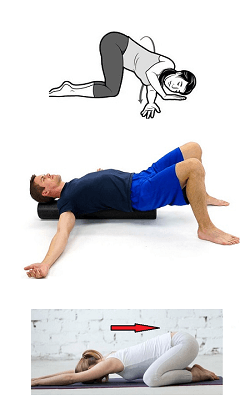
The best trapezius exercises combine stretching and strengthening for the neck and upper back for a full trapezius workout:
- Trapezius Stretches: reduce the tightness and tension through the muscle and can help to get rid of trigger points and knots in the muscle. A combination of trapezius stretches and upper back stretches work best
- Scapular Strengthening: Strengthening the muscles around the shoulder blades, particularly the lower traps helps to improve shoulder blade movement and control which helps take tension off the upper traps, thus reducing trapezius pain FIND OUT MORE >
3. Massage
Massage is a great way to relieve trapezius muscle pain, spasm and tension.
You can do self-massage by kneading down each side of your neck/shoulders with your opposite hand. Apply pressure through your finger tips or your knuckles in a circular motion, slowly working your way down the side of your neck and across the back of your shoulders, working your way along the upper trapezius fibres.
Apply enough pressure that you can feel it, but not so much that it hurts. Alternatively, you can get someone else to help, see a sports therapist or use a massage gun.
4. Trigger Point Release
Upper and middle trapezius trigger points are a common cause of trapezius pain. If you have hypersensitive trapezius trigger points, rather than massaging/kneading over the area it is more effective to place sustained, graded pressure directly through the trigger point to release trapezius pain.
Press directly down through the trigger point with your thumb or knuckle and gradually increase the amount of pressure through the knotted trapezius muscle. Hold for approximately one minute. You should start the feel the trapezius knot release as the trigger point relaxes.
Some trigger points can be stubborn and take a few sessions to release. If you can’t get rid of your trapezius trigger point yourself, you might want to see a sports therapist for help with the lump behind your shoulder.
5. Massage Ball
A great way to reduce trapezius pain from muscle tightness, muscle spasm or trapezius trigger points is to use a ball to massage over the area.
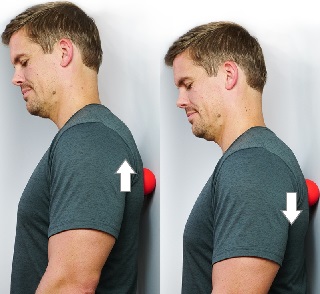
Stand with your back to the wall and place a ball e.g. massage, lacrosse, baseball, racquetball - whatever you have, over the area where you get your trapezius muscle pain and lean into the ball.
For chronically tight trapezius muscles, either bend and straighten your legs, or raise and lower your arms to move the ball and stretch through the trapezius muscle. You can change the position of the ball to target different areas of trapezius muscle pain.
This is just a simple starter to get you going, there are lots of different variations for ball massage with trapezius pain to target different areas of tightness and spasming in different positions - see the trapezius stretches article for loads more great ideas.
6. Switch Bags
Carrying heavy bags can put a lot of strain on your trapezius muscles, particularly carrying a bag on just one shoulder. Try to
- Reduce The Weight: carry only what you need
- Use A Belt Bag: that goes around your waist rather than over your shoulders
- Use A Backpack: and carry it on both shoulders rather than one. If it also has a waist strap you can use, even better. If you are using a bag that only has one strap, keep switching which shoulder you carry it on
- Use A Roller Bag: if you need a bigger bag, opt for one on wheels
7. Change Sleep Position
Sleeping on your stomach is the worst position for neck and trapezius pain as you end up with your head twisted right round to one side which puts a lot of strain on your trapezius muscle.
Instead, try sleeping on your side so that there’s no tension through your traps. One pillow under your head should be enough – you want your head level with your spine rather than lifted up. You may also want to have a pillow between your legs and one behind you to stop you from rolling over in your sleep.
And make sure you’ve got a supportive mattress.
8. Keep Active
One of the biggest causes of trapezius pain is spending lots of time hunched over where tensions creeps in to the trapezius muscles without us even realising it. If you are sitting down for long periods, set a timer so that every 30 minutes you get up and have a move around, even if it’s just for a couple of minutes. You’ll be amazed what a difference it can make.
And make sure you are keeping active doing some form of exercise for 30 minutes, five times a week. Pick something you enjoy as you are much more likely to stick with it!
Why Does Poor Posture Cause Pain?
Poor posture is one of the biggest causes of trapezius pain as well as back, neck and shoulder problems, so it is definitely worth spending some time working on improving your posture. Having poor posture often leads to:
- Back, Neck and Shoulder Pain: From stiffness, tightness, compression and wear and tear on the bones, soft tissues and nerves and increases risk of future injuries and joint problems such as shoulder impingement or arthritis
- Poor Circulation and Digestion: from compressed organs and blood vessels. Over time this can affect your metabolism and can lead to varicose veins
- Impaired Lung Function: and capacity leading to reduced oxygenation, shortness of breath and poor cognitive function
- Spine Malalignment: can affect the normal curvature of the spine and lead to areas of stiffness and hypermobility
- Poor Sleep: can be hard to find a comfortable position for your body to relax into
How To Improve Standing Posture
As a physio and pilates instructor I've helped hundreds of people to improve their posture. Whether you are standing still for long periods or walking around, good posture is really important for preventing trapezius muscle pain so here are my top tips:
- Stand Up Tall And Straight: imagine a piece of string attached to the top of your head pulling up towards the ceiling
- Tuck Your Chin In: draw you chin in slightly so your ears are over your shoulders rather than your chin poking forwards
- Keep Your Shoulders Back: draw your shoulders up 2cm, back 2 cm and down 2cm for the perfect resting place
- Keep Your Rib Cage Relaxed: and tucked down
- Keep Your Pelvis In Neutral: Pop both hands on your waist and slowly tip your pelvis all the ways forwards and then backwards a few times – find the midpoint and rest there
- Use Your Abdominal Muscles: Gently draw in your lower stomach to activate your core – hold at around 30% of a maximum contraction
- Keep Your Knees Soft: don’t let them push back into hyperextension
- Keep Feet Shoulder Width Apart: taking weight evenly between both legs rather than just one
- Spread Your Weight Through Your Feet: Image a triangle under each foot, with points under the base of your big toe, little toe and heel – spread your weight evenly between all 3 points
- Other Top Tips: when using smartphone, hold it up so you aren’t tilting your head down
This isn’t an overnight solution, it will take time to make this your new normal posture, but it makes such a big difference, not just to the trapezius pain you have right now, but long term as well.
How To Improve Sitting Posture
Trapezius pain is so often linked with poor posture when sitting - you know what it's like, you start with great intentions but soon end up slouched down!
There are some really simple changes you can make to your desk set up that will help to reduce trapezius muscle pain. These will give you a good sitting posture and will help reduce the tension in your neck, shoulders and upper back:
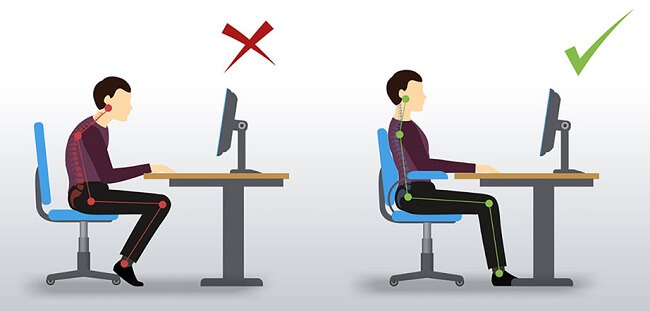
- Screen Height: your eye level should be 2-3 inches below the top of your monitor
- Monitor Distance: the monitor should be approximately an arm’s length away from your body and inclined backwards 10-20 degrees
- Keyboard Height: you want your keyboard to be level with your elbows when they are at a right angle by your sides - you shouldn’t have to lift your hands or wrists to type
- Arm Rests: Using a chair with arm rests helps support the weight of your arms, reducing the strain on your upper traps. Your shoulders should be relaxed, not hunched up, elbows resting on the arm rests
- Chair Height: When sitting your hips should be at right angles, knees should be level with or slightly lower than your hips and your feet should rest flat on the floor – use a foot rest if needed
- Lumbar Support: If there’s no lumbar support built in to your chair place a small cushion or rolled up towel in the small of your back to help keep you upright. Your shoulders should be directly over your hips, not slouched forwards. Make sure you sit right at the back of the chair to get the full support
- Head Position: tuck your chin in slightly so your ears are over your shoulders rather than letting your head jut forwards. If you are making calls, use a headset rather than cradling the phone between your ear and shoulder
- Standing Desks: standing desks are becoming increasingly popular. Being able to alternate easily between standing and sitting not only helps to reduce trapezius pain but can also help to improve circulation, brain function, mood, posture, general health and reduces blood sugar levels, back pain and the risk of heart disease. Studies have found that people using standing desks have more energy, are more productive and actually live longer!
Setting up your desk correctly will not only help reduce trapezius pain, but reduces your risk of developing all the other problems associated with poor posture that we looked at earlier.
What Else Can Help?
Most cases of trapezius pain will improve with strengthening exercises, trapezius stretches, upper back stretches, improving your posture (particularly when sitting) and massage.
It may take a few weeks for trapezius muscle pain to settle down, particularly if you have a super tight trapezius, muscle spasms or trigger points in your traps, but stick with it.
If your pain in trapezius is accompanied by any tingling or numbness in your arms or hands, or your trapezius pain persists or is affecting your function, see your doctor or a physical therapist.
You may also be interested in the following articles:
- Shoulder Pain When Lifting Your Arm
- How To Get A Good Night Sleep
- Burning Shoulder & Arm Pain
- Pain Between The Shoulder Blades
- Clicking, Cracking or Popping Shoulders
- How To Improve Shoulder Mobility
- Lump On Back Of Shoulder
Related Articles
Medical & Scientific References
- Association between Neck/Shoulder Pain and Trapezius Muscle Tenderness in Office Workers. National Library Of Medicine
- Effectiveness of physical and rehabilitation techniques in reducing pain in chronic trapezius myalgia: A systematic review and meta-analysis. International Journal Of Osteopathic Medicine
- The prevalence of myofascial trigger points in neck and shoulder-related disorders: a systematic review of the literature. BMC Musculoskeletal Disorders
Page Last Updated: January 16th, 2025
Next Review Due: January 16th, 2027
